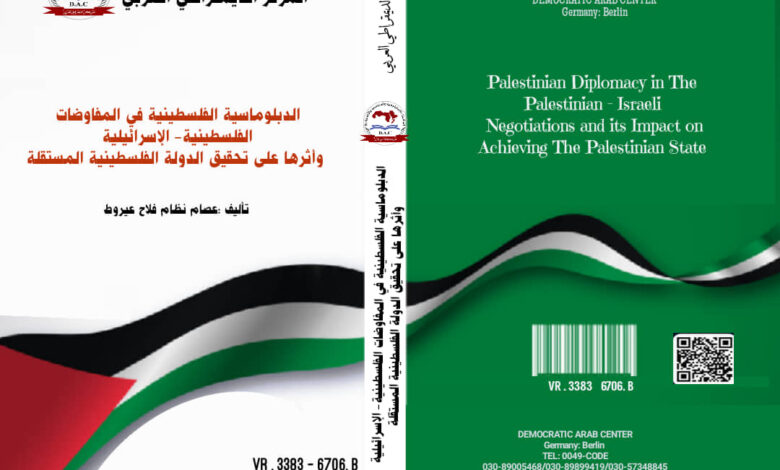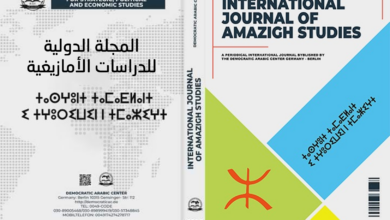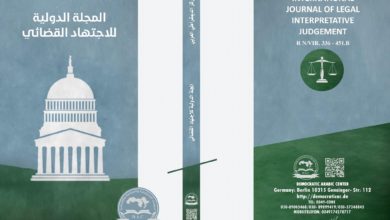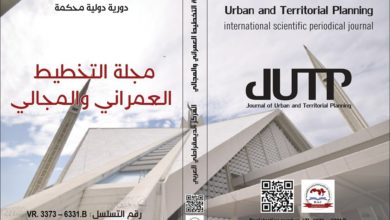الدبلوماسية الفلسطينية في المفاوضات الفلسطينية – الإسرائيلية وأثرها على تحقيق الدولة الفلسطينية المستقلة
Palestinian Diplomacy in The Palestinian– Israeli Negotiations and its Impact on Achieving The Palestinian State

تأليف : د. عصام نظام فلاح عيروط
نسخة “pdf”-
الطبعة الأولى “2022″ –من كتاب: –
الدبلوماسية الفلسطينية في المفاوضات الفلسطينية- الإسرائيلية وأثرها على تحقيق الدولة الفلسطينية المستقلة
جميع حقوق الطبع محفوظة #المركز_الديمقراطي_العربي ولا يسمح بإعادة إصدار هذا الكتاب أو اي جزء منه أو تخزينه في نطاق إستعادة المعلومات أو نقله بأي شكل من الأشكال، دون إذن مسبق خطي من الناشر .
تقديم :
في العام 1991 تبَنَّت منظمة التحرير الفلسطينية المفاوضات كخَيار استراتيجي هَدَفُه إنهاء الاحتلال وتحقيق الدولة الفلسطينية المستقلة ذات السيادة، وبدأت المفاوضات الفلسطينية- الإسرائيلية، واستمرت على مدار أكثر من 18عاماً، لم تحقق خلالها الهدف المنشود من خلال الدبلوماسية الفلسطينية التي مورست، والتي يُعتبر التفاوض العصب الأول والمحوري لها. من هنا برزت الإشكالية الرئيسية.
فهل كانت هذه الدبلوماسية مكملة للمسار النضالي الفلسطيني؟ وهل انضبطت أدواتها واستراتيجياتها مع المرجـعية الوطـنية الفلسـطينية؟ وهل نجحت هذه الدبلوماسية في الوصول إلى أهدافها؟ وإذا كانت أخفقت فهل يعود هذا الإخفاق إلى الآليات أم إلى طبيعة الصراع؟ وهل ما زالت قادرة على تحقيق أهدافها المنشودة؟ للوصول إلى إجابات علمية شافية والوقوف على الحقائق، استخدم الباحث مناهج متعددة المداخل والمقاربات، مثل منهج حل الصراعات والمنهج التحليلي والتاريخي والمقارن. منطلقاً من الفرضية التي تدَّعي بأن “الدبلوماسية الفلسطينية بملامحها و مرتكزاتها الحالية غير قادرة على إنهاء الاحتلال وتحقيق الدولة الفلسطينية المستقلة ضمن الحد الأدنى للطموح الفلسطيني من خلال المفاوضات الجارية منذ العام 1991”.
تضمَّن الفصل الأول، الإطار النظري والذي تتعرض فيه الدراسة لمفهوم الدبلوماسية وتطبيقاتها، إضافة إلى النظرية التفاوضية ومناهج واستراتيجيات وثقافة التفاوض الكونية؛ مرتكزة على نظريات الصراع لتحليل الصراع وفهمه، مبينة طبيعته وأنواعه، مسترشدة بسيناريوهات كونية لحالاته، ومستعينة بمقاربات تُمثل حالات تقترب إلى حد ما من الصراع الفلسطيني-الإسرائيلي.
أما في الفصل الثاني، فقد حاول الباحث تحليل المفاوضات الفلسطينية- الإسرائيلية باستخدام الإطار التحليلي الذي وضعه (زاتمان ويرمان) والذي تم فيه تناول البيئة والمحددات الرئيسية لاتخاذ قرار البدء بالتفاوض، وتم الوقوف على الصياغة المشتركة التي توصل لها الطرفين، والتي تمثلت باتفاقية (أوسلو)، وتم أيضاً مناقشة أبعاد ثلاث قضايا على جانب كبير من الأهمية وهي اللاجئين والاستيطان والاقتصاد.
وفي الفصل الثالث، تم مناقشة الإستراتيجية الفلسطينية في المفاوضات وطبيعتها وأدواتها وأهدافها ومعيقاتها وركائزها الإستراتيجية؛ بهدف الكشف عن الإخفاقات إن وجدت، وأسبابها، والتأثيرات المحتملة للخصم والوسطاء، وهل ابتعدت عن الحالة الكونية أو اقتربت؟ ولماذا؟ ومدى قدرة الدبلوماسية الفلسطينية المتبعة في المفاوضات على إنهاء الاحتلال وتحقيق الدولة الفلسطينية المستقلة.
خرجت الدراسة بالعديد من النتائج والتوصيات كان من أبرزها:
أن الصراع الفلسطيني الإسرائيلي هو صراع ذو طبيعة وجودية لا يمكن حله بشكل نهائي، ولكن يمكن إدارته ومحاولة تعظيم المكاسب وتقليل الخسائر، وهو ذو بنية متجددة دائمة التحول تحكمها المصالح والتطورات الديمغرافية والسياسية والثقافية، إضافة إلى التحولات الإقليمية و الدولية التي تتحكم فيها توازنات القوى العالمية.
التوصيات
ضرورة استغلال التغير الإقليمي على المستوى العربي و تعليق المفاوضات في إطار إستراتيجية فلسطينية جديدة تؤدي إلى إحداث أزمة تضع إسرائيل أمام مسؤولياتها كدولة محتله، بحيث تؤدي إلى تدخل الولايات المتحدة والمجتمع الدولي بصورة مؤثرة.
Prepared by : Issam Nezam Falah Iyrot
Abstract
In 1991, the Palestine Liberation Organization (PLO) adopted negotiations as a strategic option that aimed to put an end to the Israeli occupation and achieve an independent Palestinian state that enjoys supremacy. Consequently, negotiations commenced between the Palestinian and Israeli parties that lasted more than 18 years. Unfortunately, the negotiation process has not achieved the required objective through the diplomacy practiced by the Palestinian party that considered negotiations as its fundamental axel. Hence, the main problem arises.
Has this diplomacy been complementary to the Palestinian struggle process? Have its instruments and strategies been disciplined by the Palestinian national reference? Has it succeeded in achieving its objectives? If it has failed, is this failure attributed to the adopted mechanisms or the nature of the conflict? Is it still able to achieve its expected objectives?
In order to reach decisive answers and understand the facts, the researcher of this study used several methodologies including the conflict-solving, analytical, historical, comparative and contrastive methodologies. The researcher started from the hypothesis that presumed that “the Palestinian diplomacy with its present characteristics and bases is unable to end the occupation and achieve the independent Palestinian state within the minimum level of Palestinian ambitions through the negotiations that have been going on since 1991”.
In Chapter One, the study discussed the theoretical frame in which the researcher demonstrated the diplomacy concept and its various applications, in addition to the negotiation theory and the universal negotiation culture, strategies and methodologies, based on the conflict theories to analyze and understand the conflict, demonstrating its nature and types, depending on universal scenarios for its cases, assisted by cases that represent cases similar to the Arab-Israeli conflict.
In Chapter Two, the researcher attempted to analyze the Palestinian -Israeli negotiations, by using the Zatman-Erman analytical pattern in which they discussed the environment and main determiners that determined making In order to reach decisive answers and understand the facts, the researcher of this study used several methodologies including the conflict-solving, analytical, historical, comparative and contrastive methodologies. The researcher started from the hypothesis that presumed that “the Palestinian diplomacy with its present characteristics and bases is unable to end the occupation and achieve the independent Palestinian state within the minimum level of Palestinian ambitions through the negotiations that have been going on since 1991”.
In Chapter One, the study discussed the theoretical frame in which the researcher demonstrated the diplomacy concept and its various applications, in addition to the negotiation theory and the universal negotiation culture, strategies and methodologies, based on the conflict theories to analyze and understand the conflict, demonstrating its nature and types, depending on universal scenarios for its cases, assisted by cases that represent cases similar to the Arab-Israeli conflict.
In Chapter Two, the researcher attempted to analyze the Palestinian -Israeli negotiations, by using the Zatman-Erman analytical pattern in which they discussed the environment and main determiners that determined making the decision to start negotiations; then reaching the joint formulation concluded by the two parties represented by the Oslo Agreement in 1993. Following this, the dimensions of three vital issues were discussed: the refugees, settlements, and economy.
In Chapter Three, the study discussed the Palestinian negotiation strategy including its nature, instruments, objectives, hurdles, and strategic foundations. This is done in order to uncover setbacks, if any, and their potential causes and effects for the both the opponent and the middlemen. Has the Palestinian case departed from or approached the universal case? Why? This is done in order to reveal capability of the Palestinian diplomacy adopted in the negotiations to put an end to the occupation and achieve the independent Palestinian state.
This study reached several findings and provided some recommendations, including
The Palestinian- Israeli conflict is characterized with an existential nature that cannot be solved categorically, but it can be administered to maximize gains and minimize losses. Furthermore, it is characterized with sustainable renewed structure that changes constantly because it is governed by interests, demographic, political and cultural fluctuations, in an addition to regional and international changes that are controlled by global forces.
Recommendations
It is essential to make use of the regional changes on the Arab level and suspend the negotiations within a new Palestinian strategy that leads to cause a crisis that holds Israel responsible and makes the USA and the international community intervene effectively.
- الناشر: المركز الديمقراطي العربي للدراسات الإستراتيجية والسياسية والاقتصادية





